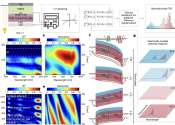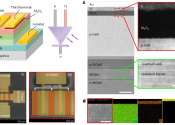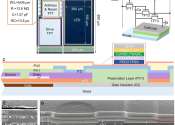In electronics, a diode is a two-terminal device (thermionic diodes may also have one or two ancillary terminals for a heater).
Diodes have two active electrodes between which the signal of interest may flow, and most are used for their unidirectional electric current property. The varicap diode is used as an electrically adjustable capacitor.
The unidirectionality most diodes exhibit is sometimes generically called the rectifying property. The most common function of a diode is to allow an electric current in one direction (called the forward biased condition) and to block the current in the opposite direction (the reverse biased condition). Thus, the diode can be thought of as an electronic version of a check valve.
Real diodes do not display such a perfect on-off directionality but have a more complex non-linear electrical characteristic, which depends on the particular type of diode technology. Diodes also have many other functions in which they are not designed to operate in this on-off manner.
Early diodes included “cat’s whisker” crystals and vacuum tube devices (also called thermionic valves). Today most diodes are made of silicon, but other semiconductors such a germanium are sometimes used.









